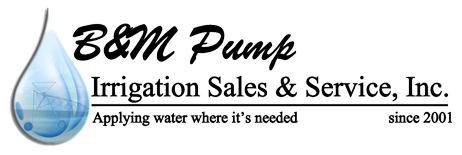The Best Way to Irrigate Wheat Crops
Looking to get the most out of your wheat crops in Texas? You can’t do it without employing proper wheat irrigation techniques. Both winter wheat and spring wheat crops are more profitable with irrigation, but higher yields and higher rates of fertilization can lead to improper levels of moisture in the soil. Here’s what you need to know about water management for wheat crops.
What are the water requirements of wheat crops?
Since spring and winter wheat are grown in the cool seasons in Texas, they’re relatively low water-use crops—but that doesn’t mean you shouldn’t pay attention to the requirements for water management for wheat. You need to take into account the variety of wheat you’re planting, since yields will vary a bit with equal amounts of water.
The total seasonal requirement of both spring and winter wheat is around 18 to 21 inches, but a lot depends on seasonal weather variations at your location. You’ll have to take into account stored moisture, rainfall and efficiency of applying water during irrigation. Once rooting systems develop in both spring and winter wheat, the plants deplete soil water content to much lower levels than other crops. During this time, wheat irrigation is extremely important in providing the moisture needed for the crop to reach full ground cover. Once most wheat has come to a head, you no longer need to irrigate the crop since water requirements are reduced.
Is there such a thing as overirrigation?
There’s a fine balance when it comes to wheat irrigation, and it is possible to overirrigate the crop. Wheat crops can only store so much water in the rooting area before leaching occurs. Typically, overirrigation at levels of just 10 percent can cause leaching salts to appear in the water. Moreover, the excess water takes plant nutrients like nitrogen beyond rooting and feeding areas. Your agricultural irrigation technician will be able to calibrate your equipment to ensure overirrigation does not occur.
How can lodging be avoided?
Lodging can cause yield losses in irrigated wheat, especially in spring-planted varieties. It’s important to plan ahead and have your soil moisture reservoir filled before the wheat comes to a head—you’ll usually be able to avoid lodging. You need to keep your soil conditions in mind, though. If your crop is planted in sandy soil, irrigation may be required even after the wheat has come to a head, but always make sure to avoid supersaturation. Discuss this with your irrigation technician, and they’ll likely suggest slow sprinkler irrigation to prevent supersaturation.
You should also be sure to avoid irrigating during windy periods, since water droplets can easily be blown off track. Not only does this lead to water waste, but it can also cause issues related to over- or underwatering.
Proper wheat irrigation techniques can give you the greatest yield from your land in Texas. Contact B&M Pump Irrigation Sales & Service, Inc. to learn more about how high-quality irrigation systems impact your yield and your overall bottom line.
Categorised in: Irrigation
